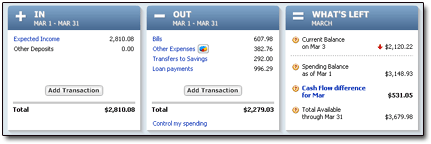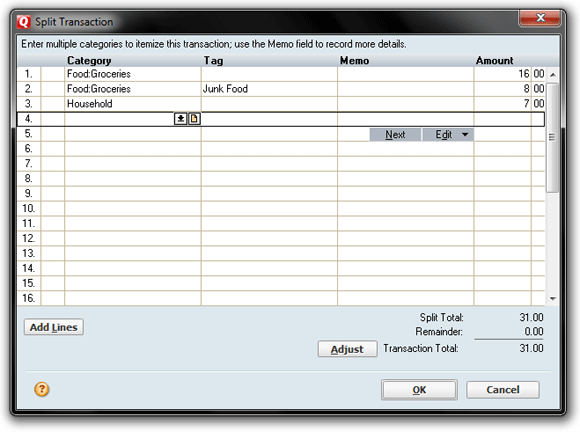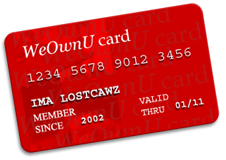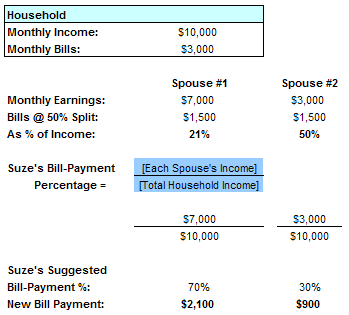It’s been a while since I discussed how my household manages its money; the last time was in October of 2006. Some things have changed since then, and since readers continue to ask my opinion on ways to keep funds running smoothly at the ol’ homestead, I’d like to cover the topic again.
Receipts, Receipts, Everywhere
This, inevitably, is Issue Numero Uno for many readers: How can I keep track of my spending as well as my spouse’s? It’s impossible to know where the money’s going!
Actually, it isn’t. Or, perhaps more correctly, it hasn’t been for us. Oh sure — it was a challenge for a while. Back when we were paying bills from our checking accounts (more on that later), we ran into a few obstacles. But once we became debt-free and were able pay our card balances in full each month, things got easier.
Cash Flow in a Box
So how to handle all those receipts? Well, we do it with a box.
This invention, I call our Cash Flow Box. Whenever either of us spends money, we tuck the receipts into our wallets RIGHT THEN. Later, once we get home, we toss the receipts in our Cash Flow box. Mail and bills go here, too.
Since I’m the guy who handles bill-paying and money-tracking for our household (gee, can’t imagine why), I sit down every couple of days and enter the receipts into Quicken. (You can tell I’m a sicko, because I actually enjoy this part. Then again, I’ve found that being in control of your money tends to have just this sort of odd, Twilight Zone effect on people.)
If any receipts need to be kept for tax purposes (or some other reason), I have a set of manilla folders right next to the box for just this purpose. Think flexible-spending account receipts, small-business expenses, and large-item purchases (where warranty might be an issue) here.
The rest of the receipts get File Thirteen’d as soon as I enter them in Quicken.
Easy peasy.
Joint Checking … Times Four
For starters, our household has multiple joint checking accounts — four of them, in fact. And a host of savings accounts (online variety, mostly) on top of that.
I primarily use our ING Direct Electric Orange checking, while Lisa uses a local credit-union checking account. Due to its extreme ease of use, ING Direct also holds most of our savings at present.
Since ING Direct isn’t exactly a “local” banking entity for us — if you need to see someone face-to-face, whatcha gonna do? — we also have two joint, no-fee checking and savings combos at local institutions. We generally keep only a few hundred dollars in these “just in case” accounts.
Pay It All By Plastic
Here’s the caveat to all these checking accounts: We rarely pay for anything by check. Every expense than can go on plastic OR can be paid electronically will be handled that way. We use two cash-back, no-fee cards for this. We pay these cards in full every month.
Because of this, we typically write no more than one or two paper checks per month.
Spending and Account Balances
I am a Quicken devotee. It is my Ultimate Money Security Blanket, and I’m not ashamed to admit that. I depend on Quicken like snow depends on cold.
Right now, my laptop runs Quicken 2010 Deluxe (review), which I believe is one of the best Quicken versions yet.
Quicken tracks our spending, our account balances, our net worth, our bills and recurring payments, and about a thousand other things that are only important once or twice per year. (Use taxes would be one!)
And oh yeah — I now use Quicken for our…
Budgeting!
Honestly, we don’t need much of a budget these days. With no debt (other than our mortgage) and a definite aversion to long-term financial commitments, we just don’t have that many bills coming through the door. Savings-building is our goal now, and I can accomplish it just fine, thank you, with Quicken’s recently-added Cash Flow Tab.

What’s coming in? What’s going out? The Cash Flow Tab tells me what I need to know. Once I got our recurring bills and deposits set up, and designated the correct “spending” accounts for Quicken to monitor, I no longer had any need for my Spending Plan spreadsheet at all.
I love my Spending Plan spreadsheet. But having my budgeting tool contained within Quicken makes things oh so simple.
And simple is good.
Download Transactions? Nope!
I have never once used Quicken’s ability to download transactions from banks and other financial institutions. As noted elsewhere, I enter all Quicken transactions by hand.
Keeps me “closer” to our spending, ya know? (Plus I’ve heard too many horror stories about transaction downloads going horribly wrong!)
The All-Important Freedom Account
I believe that the discipline to save up for future expenses — rather than relying on the kind-heartedness of Visa and Mastercard — is a hallmark of successful personal finance. Heck, it may be THE hallmark.
In any event, we do such saving in our Freedom Account, which resides with the rest of our savings at ING Direct. Why?
Because it’s darn easy (and immediate) to transfer funds to our Electric Orange checking, where the vast majority of our transactions land at some point. (We pay our credit cards electronically via Electric Orange.)
This is one area where Quicken falls short. Since it doesn’t allow for subaccounts, I track our FA subaccount balances with ExcelGeek’s Freedom Account spreadsheet.
Emergency Fund
I don’t have a specific spreadsheet that I use to track my Emergency Fund. We’re currently keeping most of our E-fund (say, 90% of it) at ING Direct. Any transactions which affect our Emergency Fund get logged/tracked in Quicken, as noted above, and I can always see our E-fund’s balance right there in my Quicken toolbar.
Small-Business Stuff
Lisa and I both have our own small-business ventures. I utilize QuickBooks 2009 Pro to manage these tasks.
Credit Monitoring & ID Safety
I monitor our credit reports and scores monthly. I do this with TrueCredit 3-Bureau Credit Monitoring . (Here’s my TrueCredit review, if you’re interested.)
Whew … that should pretty much cover it!








